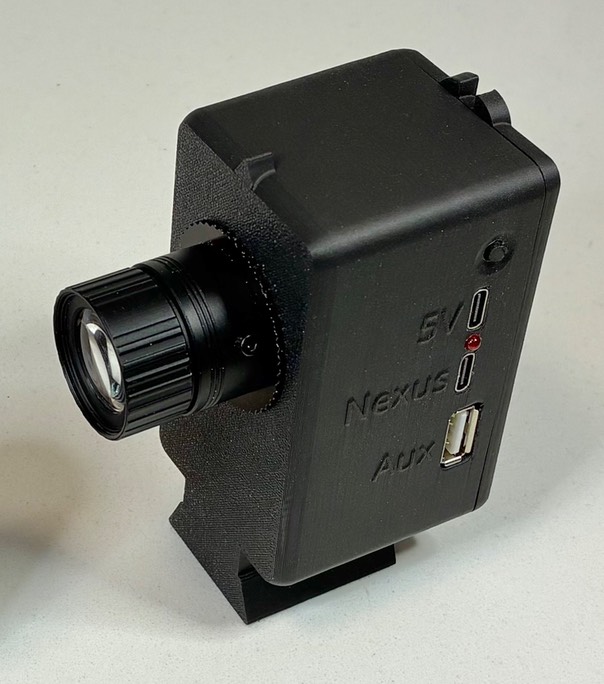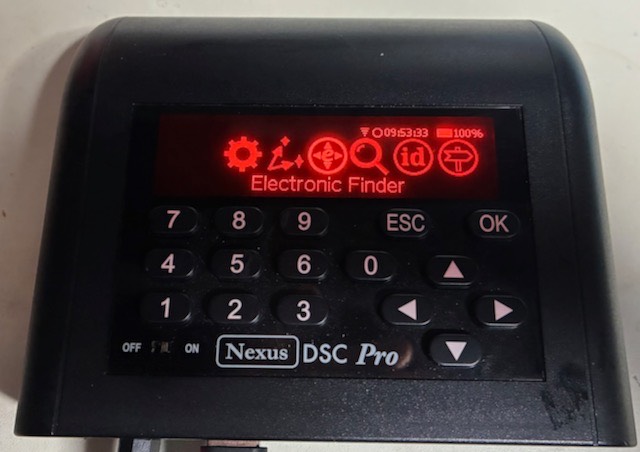Astrophotographers have long been using digital finders to ensure their main telescopes are centred on the target of choice. Relatively low cost yet high performing cameras, telescopes and processors have been integrated into the overall imaging process, greatly improving the experience. What could this technology do for visual observers?
The development included testing the options and getting feedback from others brave enough to build their own copies. The gallery shows images of the various parts.
Functionality
- Make initial two 'star' alignments easier. Instead of aligning on Named Stars in the Nexus catalogue, you can just point the scope at a convenient part of the sky and the eFinder will determine the position very accurately and send the result to the Nexus DSC as a pseudo alignment ‘star’.
- 'Local Sync’ is easy. The eFinder quickly resolves true RA & Dec of where it is pointing and sends that to the Nexus DSC as a local sync point. No need to move off to a nearby bright star to sync.
- Refine Goto’s if drives are fitted. Drives typically gets within 10 - 20 arc mins of the target. The errors are down to initial Nexus DSC alignment and the stability and orthogonality of the scope mount. The eFinder can automatically finish the goto by sending the scope drive commands to close out any error.
There are three versions of eFinder. Click on the version title or images to see more details and build instructions. Actually there is a 4th - its also fully integrated into the ScopeDog mk3 drive system, see here.
The ‘original' system comprises,
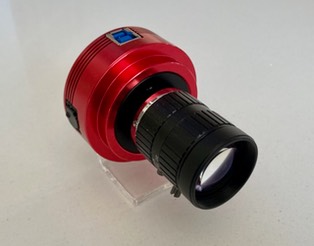
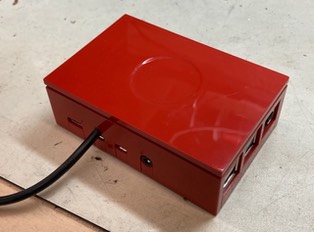
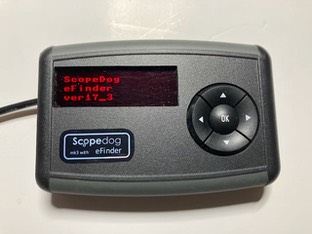
- ASI120MM-S or -mini camera, chosen for its low price, good performance and availability of drivers compatible with Python coding.
- 50mm f/1.8 cctv lens, affordable, mounts directly to the camera, fast and more than adequate image quality.
- Raspberry Pi 4B or 5 4GB. Loaded with the latest Raspian OS.
- A local build of Astrometry.net on the Raspberry Pi. Well proven code and fast if set up right. Many features which made the eFinder powerful and user friendly.
- USB conected hand box with a Raspberry Pi Pico board, OLED display and 5-way navigation switch. Full control of the eFinder and easily mounted near the eyepiece.
- The current Nexus DSC (standard & Pro version)s firmware includes the necessary commands to work with eFinder
- The eFinder has been tested with both ScopeDog, ServoCat & SciTech drive systems. It should work with other goto AltAz drives connected to the Nexus DSC.
- This version has been largely superceeded by the ‘eFinder Lite’, but it you have a spare Raspberry Pi and camera, it might be for you.
When the Pi Zero 2 W was released, it made possible a smaller single box solution.
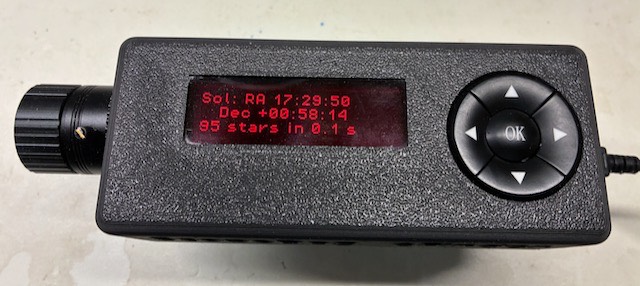
- Same functionality as original eFinder, plus
- Single cable to the Nexus DSC usb port supplies both power and communications.
- Based on Pi HQ camera, but ASI120 still an option.
- Focus and exposure adjust utility screen added.
- Broadcasts image over wifi.
- Standalone ‘Live’ mode running without a Nexus DSC, driving SkySafari over wifi
With close collaboration, the controls and display have been integrated into the Nexus DSC Pro (Sorry, not earlier model Nexus DSC)
- Same functionality as eFinder Lite, plus
- Aux USB port to relay Nexus DSC USB commands to ServoCat & Sky Tracker
- External power input socket (USB C 5V)
- Easier to use
- Lower power consumption
- Available as DIY or ready built (2026)
- Standalone ‘Live’ mode running without a Nexus DSC, driving SkySafari over wifi.
